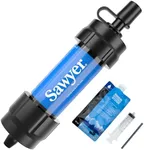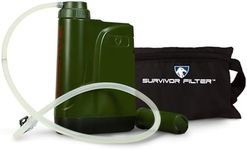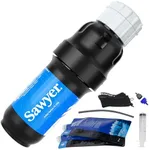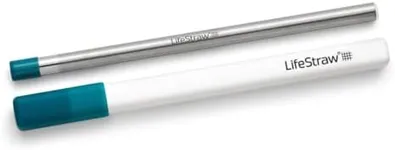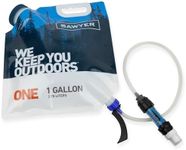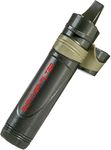Buying Guide for the Best Water Filter Straws
Choosing the right water filter straw is crucial for ensuring you have access to safe drinking water, especially when you're out in the wilderness or in emergency situations. Water filter straws are portable, easy to use, and can be a lifesaver in situations where clean water is not readily available. To make an informed decision, you need to understand the key specifications and how they align with your needs.Filtration CapacityFiltration capacity refers to the amount of water a filter straw can purify before it needs to be replaced. This is important because it determines how long the straw will last. Filtration capacities can range from a few hundred liters to several thousand liters. If you plan on using the straw for short trips or occasional use, a lower capacity may suffice. For extended trips or frequent use, opt for a higher capacity to ensure you have clean water throughout your journey.
Filter TypeThe filter type indicates the technology used to remove contaminants from the water. Common types include hollow fiber membranes, activated carbon, and ceramic filters. Hollow fiber membranes are effective at removing bacteria and protozoa, making them suitable for most outdoor activities. Activated carbon filters can also remove chemicals and improve taste, which is beneficial if you're concerned about water quality. Ceramic filters are durable and can be cleaned for extended use. Choose a filter type based on the specific contaminants you expect to encounter and your preference for taste and maintenance.
Pore SizePore size measures the size of the openings in the filter, typically in microns. This is crucial because it determines what contaminants the filter can remove. Smaller pore sizes (e.g., 0.1 microns) can filter out bacteria, protozoa, and some viruses, providing a higher level of protection. Larger pore sizes (e.g., 0.2 microns) are still effective against bacteria and protozoa but may not filter out smaller viruses. If you're traveling in areas with known waterborne viruses, opt for a smaller pore size for maximum safety.
Flow RateFlow rate indicates how quickly water can pass through the filter, usually measured in liters per minute. A higher flow rate means you can get clean water faster, which is convenient when you're on the move. However, higher flow rates may sometimes compromise filtration efficiency. For casual use or when you have time to wait, a lower flow rate is acceptable. For situations where you need water quickly, such as during intense physical activity, a higher flow rate is more practical.
Weight and PortabilityWeight and portability are important factors, especially if you're carrying the filter straw on long hikes or in a survival kit. Lightweight and compact designs are easier to carry and take up less space in your pack. Consider the overall weight and how it fits with your other gear. If you're an ultralight backpacker, prioritize the lightest and most compact options. For general use, a slightly heavier model with additional features might be worth the extra weight.
Ease of UseEase of use refers to how simple it is to operate the filter straw. This includes how easy it is to draw water through the straw, clean the filter, and maintain it. Some models require more effort to suck water through, which can be tiring over time. Others may have complex cleaning procedures. Look for a model that balances ease of use with effective filtration. If you're new to using water filter straws, choose one with straightforward instructions and minimal maintenance requirements.


